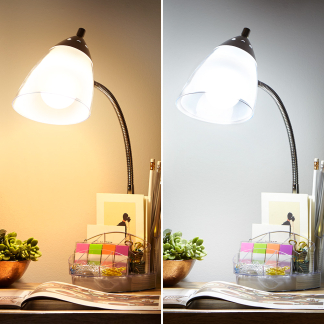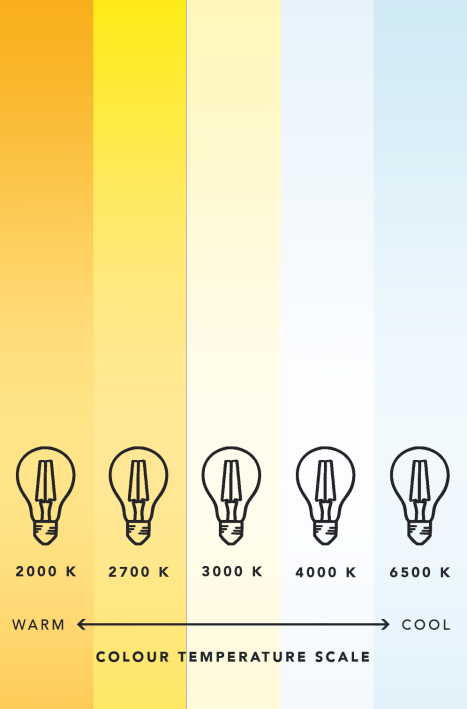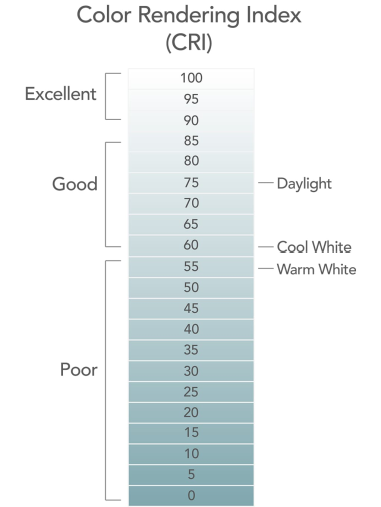
The first LED bulbs on the market produced a very blue daylight; many people think that’s still the case. However, this is no longer blue as LED can range in colour temperature. Kelvins are used to measure light colour. Scientific tests have proven the colour of light can impact upon energy levels and productivity. For example, to relax at home you would choose a warm light in rooms such as your bedroom. A warm white light, however, may not work in your kitchen or bathroom, as these rooms usually have white fittings, such as sinks or cabinets, which would look give it a yellow tint in warm light.
We would recommend a white (3,000K) or cool white (4,000K) light for those areas. LED technology has evolved significantly within the last decade. Today, most LED lights are available in a variety of white colours – everything from very warm white (2,000K) through to daylight (6,500K). You can choose an LED light that shines with the familiar warm glow of a traditional lightbulb, or go for one that mimics natural light.
Take a look at the illustrations to assist you in choosing the correct colour temperature. (For illustration only, colours and colour names may not be exact)


This image can give you a visual idea of how the various colour temperatures look in an application.
The type of light bulb you use in your home or office could have a profound effect on the way a space looks. This is often attributed to something known as the color rendering index. Also referred to as CRI, this index measures the ability of a light source to reveal colours of objects in contrast to a natural light source, such as the sun filtering in through your windows. Higher CRI may make coloured objects seem more HD, so when looking for a product choosing a higher CRI may be of interest if you want objects really stand out,
Every type of lighting has its place on what’s known as the color rendering index chart. This chart measures on a scale from 0 to 100, depending on how accurately it can produce light that matches a naturally referenced light source, such as the sun. In general, bulbs at the higher end of the scale will produce a more accurate color rendering of the objects around it. This can be vital for use in things like photography or lighting used in a museum setting. But it can also affect you and your home. It’s best to choose bulbs that will make your surroundings clear, bright and as close to how they would appear in an outdoor, natural setting.


LED bulbs have grown in popularity recently, mainly due to their energy efficient qualities and bright light production. In terms of CRI for LED bulbs, most LED lights produce a score of about 80 to 90 on the chart. The result is a brighter room, but with a much more natural and accurate output of light. Unlike fluorescent lighting which can create an unnatural look, LEDs are better suited to indoor environments. Aside from the color rendering index, the number of lumens output, or actual light produced also plays a role in the overall effectiveness of an LED bulb too.